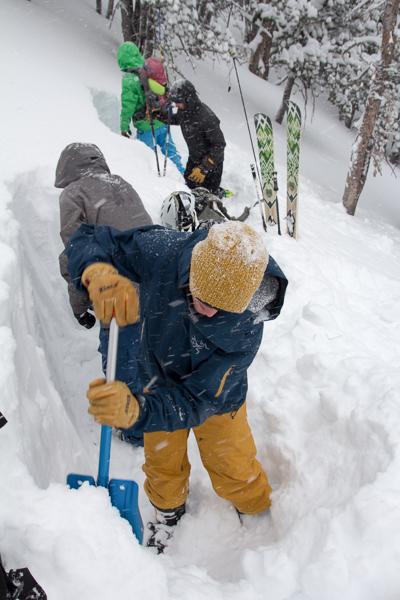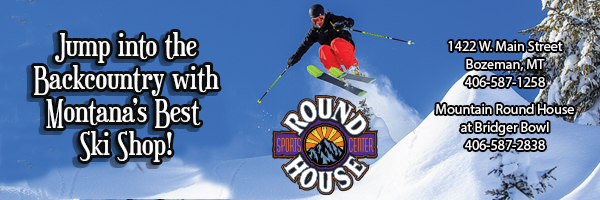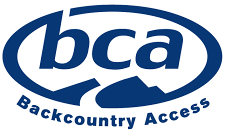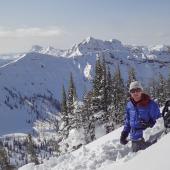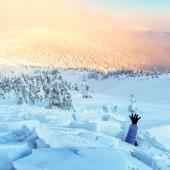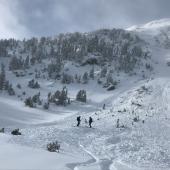Ski Patrol
My Alpine Education, Part 2: Choosing a Provider
Editor’s note: This is part two of a six-part series on learning about avalanches and how to keep oneself—and one’s partners—safe while ski-touring in the backcountry. Read part one here.
Bozeman winters may be long and snow-filled, but with so many folks at the ski hill, powder quickly turns to ice sheets and moguls. Hence the siren song from the high alpine: all those mountains, reaching thousands of feet into the sky, calling our names, urging us to come and play. There's no lift ticket and the snow never gets tracked out. This is the beauty of the backcountry. But there's ugliness, too: avalanches. The good news is that with proper education and training, a skier, snowboarder, or snowmobiler can manage the risk of being buried alive.
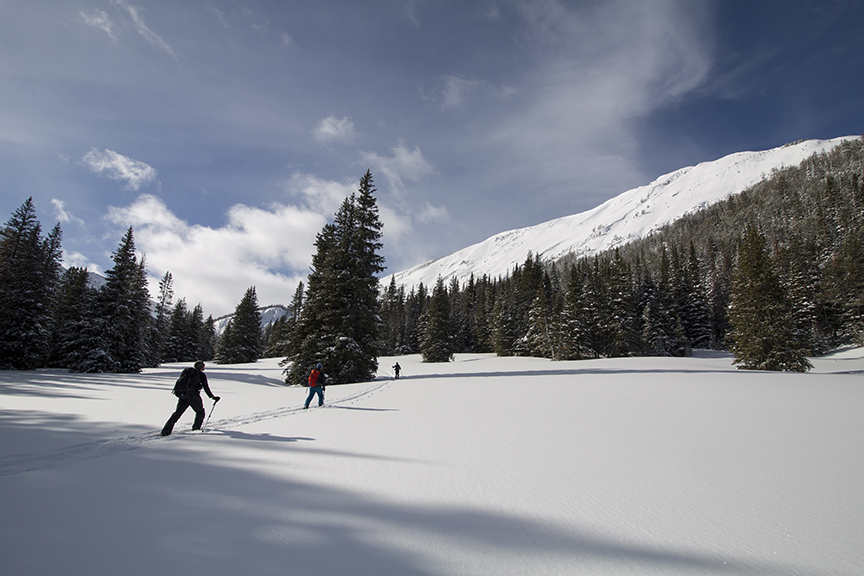
No better day: skinning up into the mountains.
Where might one get such training? Lots of places—with multiple organizations teaching and certifying avalanche-education instructors, there's a plethora of providers to choose from. However, in the U.S., there are no laws dictating who can teach avalanche-safety courses. Which means that any blockhead with a business can offer training. And that's why I found myself scouring the internet, talking to patrollers and ski techs, searching for the best avy-ed service in southwest Montana.
Digging a snow pit: the fundamental avy-safety measure.
First, I looked into reputation. The better the reviews, the more reliable the service should be, right? Maybe—how the company markets and represents itself is important, too. I asked around and called around to get a good feel for each outfit's approach and style. I wanted a personable, easy-going instructor as well as a good teacher.
Next, I considered content and trajectory. Could I use the same instructor and the same curriculum for multiple courses? This would prevent overlap and provide a more cohesive, comprehensive education, versus hopping from one curriculum to the next.
Location was another consideration. If possible, I wanted to learn in actual avalanche terrain, and have fun doing it. No backyard academics; I wanted full immersion.
Finally, I decided that my provider must be certified by the American Avalanche Association. A3 is the professional organization responsible for establishing course guidelines, supporting avalanche research, and administering professional-level avalanche education in the U.S. Not only does A3 support the cutting edge of snow science, but it maintains the standards of accreditation.
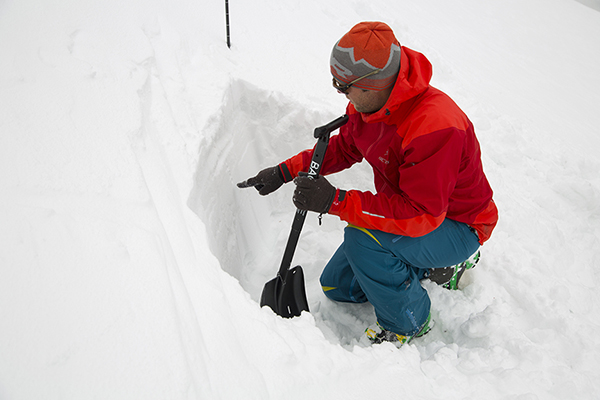
A certified American Avalanche Association instructor describes the snowpack.
And so after weeks of homework, I settled on guide Drew Pogge, who owns and operates Big Sky Backcountry Guides (BSBG). Drew has been skiing and teaching avalanche safety for many years, all over the world—basically, anywhere there’s snow. He also happens to serve on the board of A3, which demonstrates his commitment to quality avalanche education. BSBG is A3-accredited, operates out of Bozeman and Big Sky, and provides courses ranging from basic Avalanche Awareness to intensive Recreational Level 2 courses. The company has an outstanding reputation, and Drew's team of instructors possess an impressive breadth of knowledge and experience.
Drew’s courses take place in rugged mountain terrain, with the majority of Level 1 classes based in a backcountry yurt in the Tobacco Roots. Waking up in the morning and skinning a scant 300 vertical feet to the first snowpit site—that sounds appealing. Being an all-inclusive trip—food and lodging provided—this class is on the pricier end, but well worth the extra cash.
Unbeatable views from the Bell Lake Yurt, the classroom for Big Sky Backcountry Guides.
In addition to the location of the class, BSBG’s attitude is students-first. The guides seem much more concerned with your education than with making money.
And so my avalanche education began, first with an Awareness class, followed by Rescue Fundamentals. After that I'll take my Level 1—and with any luck, I'll be ready to head into the backcountry with my ski pals, touring safely, avoiding poor decisions and coming out alive, every day.
When you're ready to get avy-educated, do your own homework. Again, there are plenty of options. Just remember: whatever class you decide is for you, never be afraid to ask questions. Make sure to inquire about the level of training the instructor has, and where that training took place. If the instructor is serious about his or her operation and about safety, questions about his qualifications and experience will be welcomed. Defensiveness is a sign of insecurity and a huge red flag.
If you can, go one step further and bring that friend who is going to accompany you out into the backcountry, so you can get the same training and be better able to manage the risks, together. But, above all else, understand that this is only an introduction to snow science, a first step—there's plenty more to be learned, and in the meantime, reject over-confidence and proceed with caution.
Next up in the series: the author carefully details the gear he will use all winter long, to maximize his alpine education. Read part three here.

